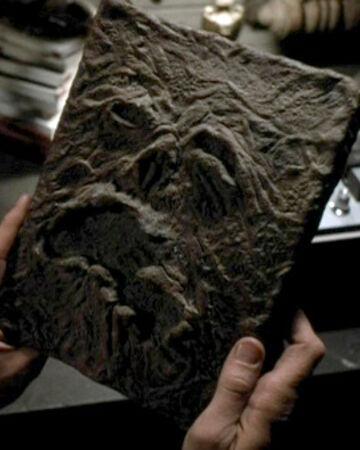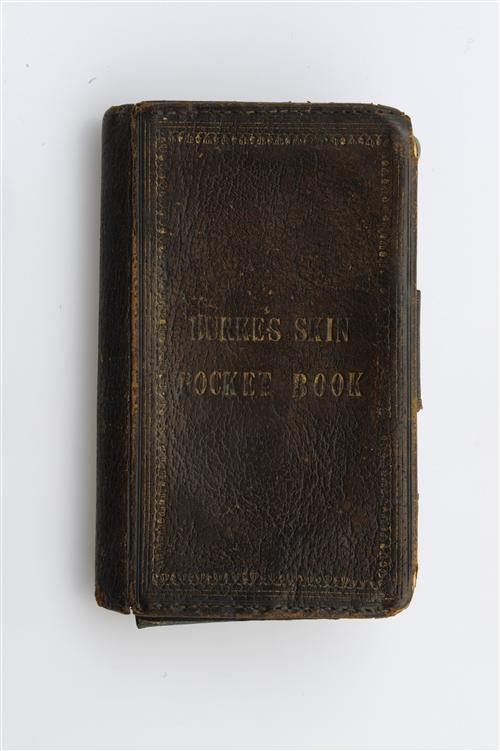Share the Lore!
By: Alex Postrado
The Long-Standing History Of Binding Books In Human Skin
The Mütter Museum is widely recognized as the finest medical history museum in America and among the top all over the world.
Housing some of the best-preserved medical relics from recent centuries, the Mütter welcomes hundreds of thousands of visitors per year 一 people from different places, eager to see the curiosities the museum has in store.
As interesting as their collection of antiquated medical instruments and pathological specimens are, they are not the only intriguing oddities in the Mütter Museum.
In fact, those are just the start.
The Philadelphia museum is also a wonderland for fans of the medical macabre.
Displaying pieces of Albert Einstein’s brain, the mummified Soap Lady, and even the conjoined liver of twins Chang and Eng Bunker 一 the Mütter contains no shortage of morbid curios.
So, it is not surprising to find out that, perhaps, some of the grisliest kinds of books in the entire world can be found under the same roof.
Books that are bound in human skin.
Believe it or not, the practice of binding books in human skin has been around for ages now 一 not only in stories, artistic renderings, and films but also in the actual, physical world.
Though human skin-bound books in movies 一 like, the Necronomicon Ex-Mortis of the Evil Dead franchise 一 often have the power to summon evil, their real-life counterparts only invoke the fragments of our history that normally would be too grim to remember.

Yet today seems like the perfect day to revisit those pages.
Is Binding Books in Skin a Thing?
The horror genre 一 as evident in both film and literature 一 includes books bound in human skin as one of its recurring elements.
Around the 1930s, David H. Keller’s Binding Deluxe took to writing the story of a bookbinder who “uses the skins of the men she murders” to craft a set of encyclopedias.
Fast forward to 50 years, Brian Lumley’s Billy’s Oak plays with a similar theme 一 this time, introducing a 400-year-old, human skin-bound book, called the Cthaat Aquadingen.
And in more recent memory, it is Nick Mamatas’s I Am Providence that easily comes to mind as to works having this intriguingly dark narrative curveball.
But, it is not just works of fiction that have books bound in human skin.
The history of mankind also holds records after records of this revolting yet “somewhat common” back-in-the-day practice.
The term for which is anthropodermic bibliopegy.
The products of this particular practice can conveniently be called anthropodermic books.
Despite the boasting term, these books actually often look like nothing out of the ordinary.
In a quick glance, they could even be mistaken for some vintage leather-bound books.
And that similarity in appearance could, perhaps, be part of what led past binders to exercise the “depthless capacity of human imagination” into action, out of curiosity about how human 一 instead of animal 一 skin would work as a book cover.
This, eventually, ushered in the creation of what others call the “most macabre books in history“.
The Books that Can Make Your Skin Crawl
In October 2020, UCLA collections strategies librarian Megan Rosenbloom authored a book about the history, as well as ethics surrounding the outdated practice, titled Dark Archives: A Librarian’s Investigation into the Science and History of Books Bound in Human Skin.
And in there, she discussed several examples of skin-bound books and even delved into the plausible motives that resulted in the making of these rare oddities.
Alongside the book, Rosenbloom also worked with other members of The Anthropodermic Books Project, which examined 50 alleged human skin books across countries.
A number of the tested books were found to be made of animal skin instead. And out of the 50, only 18 proved to be genuine.
Among those were the books of Dr. John Stockton Hough.
In 1869, a woman named Mary Lynch died at Philadelphia General Hospital from acquiring trichinosis, while getting treatment for tuberculosis.
It was Dr. Hough, who was assigned to perform the autopsy.
But when he learned about Lynch’s case of trichinosis 一 one that he found to arguably be the first in all of Philadelphia 一 he knew that it “demanded” more than just the usual procedure.
It is said that Hough removed portions of skin from Lynch’s thighs and preserved it in his ward 一 whereas the rest of the woman’s body was “dumped into a pauper’s grave at Old Blockley“.
And years later, Hough used the skin to bind three of his favorite textbooks on women’s health and reproduction:
Two Louis Barles originals: 1650’s Recueil des secrets de Louyse Bourgeois and 1680’s Les nouvelles découvertes sur toutes les parties principals de l’homme, et de la femme; as well as Robert Couper’s Speculations on the Mode and Appearances of Impregnation in the Human Female from 1789.
Today, those books are regarded by some as the most famous skin-bound works in recorded history.
And they are being displayed in The Historical Medical Library of the Mütter Museum 一 as part of the largest collection of “confirmed anthropodermic books” worldwide!
Other surviving examples of books bound in human skin are noted to be scattered in various places of the globe 一 a significant sum of them, created from bodies of executed criminals, like that of William Burke and John Horwood.
Horwood is known as “the first man to be hanged at Bristol Gaol“. Executed for the murder of Eliza Balsum in 1821, it was attending surgeon Richard Smith that secured parts of his skin for later use:
As materials to bind pages that contain the details of Horwood’s gruesome killing rampage.
William Burke, on the other hand, was involved in a different, yet similarly sinister crime that took place around the same time.
Instead of digging up corpses to sell to anatomists, Burke 一 along with his partner, William Hare 一 murdered living people.

After Burke was captured and hanged, part of the narrative was lost, but it is noted that his skin ended up as a small, pageless pocketbook cover 一 one that eventually found its way to the museum of Royal College of Surgeons of Edinburgh.
Identifying Other Human Skin Bindings
Horwood’s and Burke’s books were not the only anthropodermic bindings that came from the skins of outlaws of the olden days.
The Highwayman: Narrative of the Life of James Allen alias George Walton also makes it to the list, among others.
And there were also books that traded on the skins of unclaimed or anonymous corpses 一 like Joseph Leidy’s An Elementary Treatise on Human Anatomy believed to be covered in the skin of an unnamed Civil War soldier, at least 6 copies of Hans Holbein the Younger’s The Dance of Death, and one of The National Library of Australia’s 19th-century poetry books.
While, nowadays, only 18 books bound in human skin are confirmed by science 一 either by DNA sampling, matrix-assisted laser desorption, and ionization or better yet, by peptide mass fingerprinting 一 researchers agree that it remains likely that more are yet to be discovered.
Why Do We Bind Books in Human Skin?
Even back in ancient times, there were already records of humans displaying the flayed skin of their defeated enemies after securing their victory.
Proof of that exists in remnants of Assyrian civilizations in the 25th-century BC Mesopotamia, as well as in the 15th-century AD Aztec Empire.
But mankind’s more recent history clearly was not spared either by the morbid practice 一 despite it evolving into a more “civilized” form than it was ages ago.
Parallel to how people of the ancient past take pride in displaying the skin of their adversaries once captured, the 1800s paved the way for the use of the skin of criminals as book coverings.
And just by that, it is already easy to see how anthropodermic bibliopegy was always somewhat part of our stories as humans.
But why do we do it? Why are there books bound in human skin?
Well, the answer is simple.
Though some people might have requested their skins to be utilized into memorabilia that 一 albeit quite absurd 一 can be kept by their families after their demise, most were tanned into book covers 一 even without the subject’s consent 一 by physicians and medical bibliophiles who “wanted to enhance the value of their libraries“.
Well-respected experts who had access to potential and unique binding materials that not everyone had.
However, there is an ethical question in that.
The subjects of the macabre practice were once living, breathing human beings.
And considering that most of these “donors” were already deceased when the taking of skin took place, scholars argue that it is likely that they never even got the chance to consent to anything.
Including being viewed by thousands of people centuries later as items of both fear and fascination 一 and sometimes, even disgust.
References:
The Macabre World Of Books Bound In Human Skin Books Bound In Human Skin Aren’t Fiction And A UCLA Librarian Has The Whole Story Seeking The Truth Behind Books Bound In Human Skin Anthropodermic Bibliopegy: Books Bound In Human Skin It Was Once 'somewhat Common' To Bind Books With Human Skin Anthropodermic Bibliopegy – Binding Books In Human Skin The Hide That Binds: A Medical Librarian’s History Of Books Covered In Human Skin The Science And History Of Books Bound In Human Skin A Binding Of Human Skin In The Houghton Library: A Recommendation
